Guru Gobind Singh Ji
Guru Gobind Singh Ji
Introduction : –
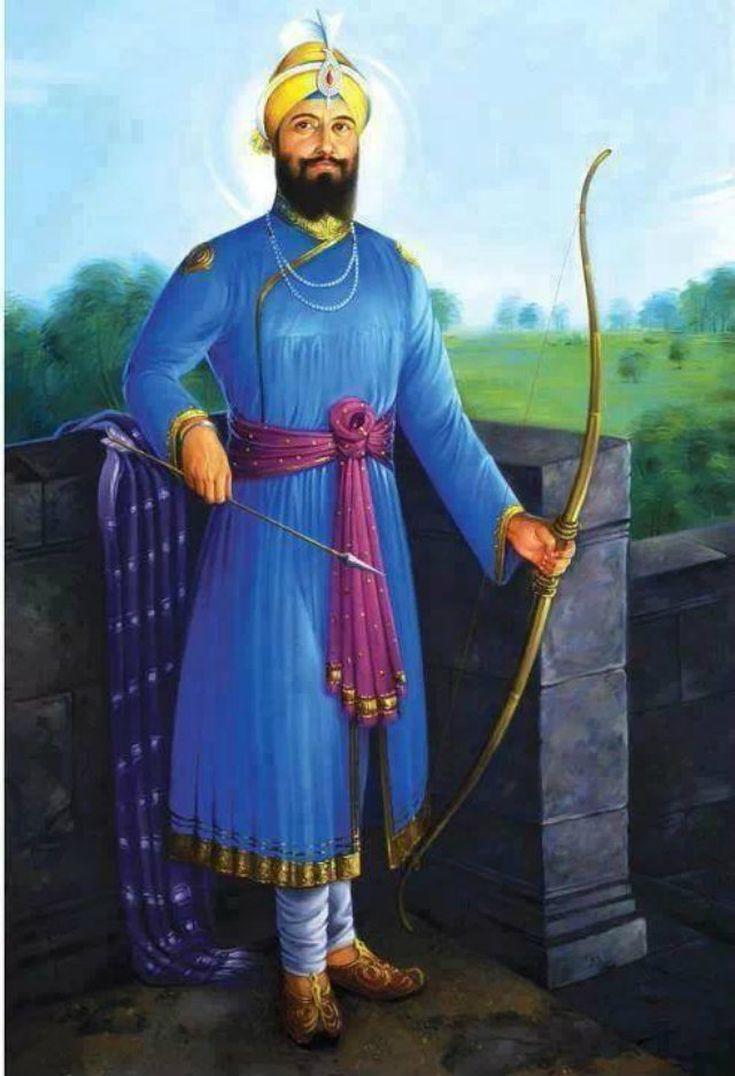
Guru Gobind Singh ji (1666 to 1708) was conceived “Gobind Rai” in Patna, Bihar in India and was the tenth and last of the ten human frame Gurus of Sikhs. Master Gobind Singh progressed toward becoming Guru on November 24, 1675 at nine years old, following in the strides of his dad Guru Teg Bahadur ji.
He was the pioneer of the Sikh confidence, a warrior, a writer, and a logician. In the Sikh society, Guru Gobind Singh is viewed as an ideal case of masculinity; exceptionally instructed, gifted in horsemanship, furnished battle, gallant, and liberal in character.
Guru Gobind Singh’s birth: –

Guru Gobind Singh was conceived as Gobind Rai in Patna to Guru Tegh Bahadur and his better half Mata Gujari. He was conceived while Guru Tegh Bahadur was visiting Assam to spread his lessons.
It was here that Gobind Rai was destined to Mata Gujari 1666. It is said that Pir Bhikan Shah moved toward the youngster and offered two dishes of drain and water, implying both the immense religions of Hinduism and Islam. The youngster grinned and set his hands on the two dishes.
The Pir bowed in absolute quietude and veneration to the new Prophet of all humankind. Guru Gobind Singh was conceived with a blessed mission of which he lets us know in his life account “Bachitar Natak”. Master Ji depicts the reason for his resulting in these present circumstances world and why he rose up out of the Supreme Reality in human shape to do his Creator’s order:
Guru Gobind Singh Ji
“For this intention was I conceived, let all righteous individuals get it. I was destined to propel honesty, to free the great, and to wreck every criminal root and branch.”
Founding the Khalsa : –

In 1699, the Guru asked for the Sikhs to assemble at Anandpur on Vaisakhi (the yearly spring harvest festival). According to the Sikh convention, he requested a volunteer from the individuals who accumulated, somebody willing to forfeit his head. One approached, whom he took inside a tent.
The Guru came back to the group without the volunteer yet with a grisly sword. He requested another volunteer and rehashed a similar procedure of coming back from the tent without anybody and with a bloodied sword four more occasions. After the fifth volunteer ran with him into the tent, the Guru came back with each of the five volunteers, all sheltered. He considered them the Panj Pyare and the principal Khalsa in the Sikh tradition.
Guru Gobind Singh Ji
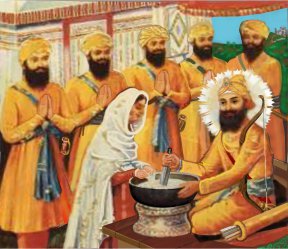 Master Gobind Singh at that point blended water and sugar into an iron bowl, mixing it with a twofold edged sword to get ready what he called Amrit (“nectar”). He at that point managed this to the Panj Pyare, went with recitations from the Adi Granth, subsequently establishing the khande ka pahul of a Khalsa – a warrior community. The Guru likewise gave them another surname “Singh”.
Master Gobind Singh at that point blended water and sugar into an iron bowl, mixing it with a twofold edged sword to get ready what he called Amrit (“nectar”). He at that point managed this to the Panj Pyare, went with recitations from the Adi Granth, subsequently establishing the khande ka pahul of a Khalsa – a warrior community. The Guru likewise gave them another surname “Singh”.
After the initial five Khalsa had been immersed, the Guru requested that the five purify through water him as a Khalsa. This made the Guru the 6th Khalsa, and his name changed from Guru Gobind Rai to Guru Gobind Singh Ji.
Guru Gobind Singh Ji
First, they must wear the following articles whose names begin with ‘K’:
1. Kesh – unshorn hair. This represents the natural appearance of sainthood. This is the first token of Sikh faith.
2. Kanga – A comb to clean the hair.
3. Kachha – An underwear to indicate virtuous character.
4. Kara – An Iron bracelet on the wrist, a symbol of dedication to the Divine Bridegroom.
5. Kirpan – A sword symbolizing dignity, power, and unconquerable spirit.
Zafarnamah bears result : –
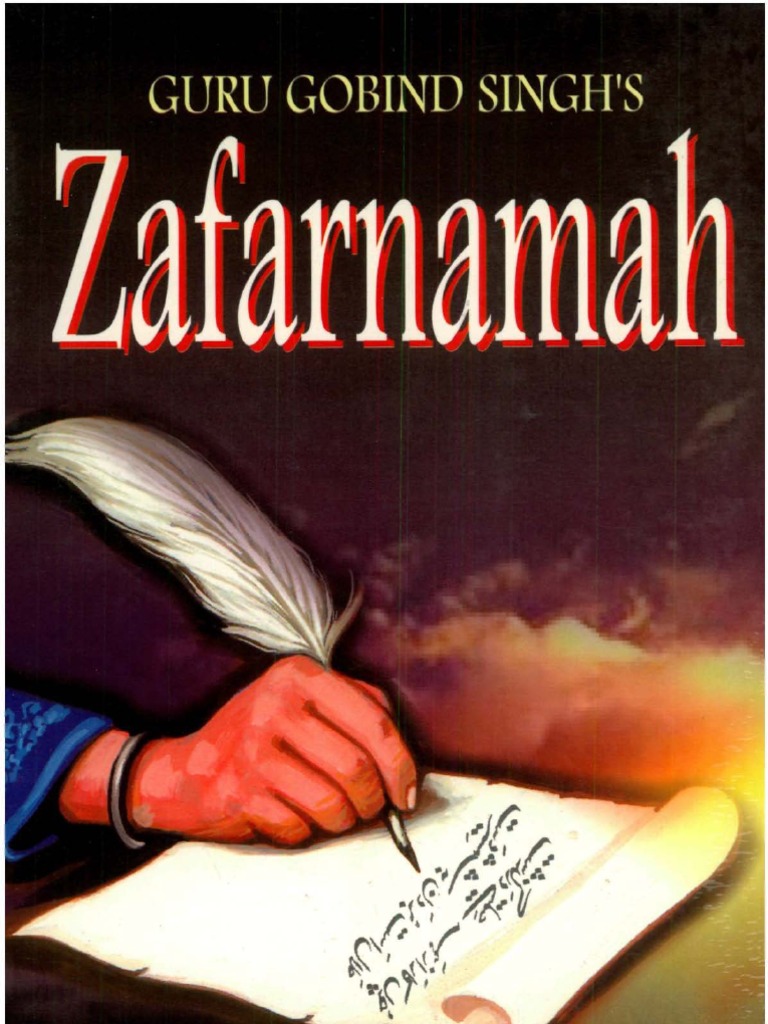
The Zafarnamah sent by Guru Gobind Singh Ji from Dina appears to have contacted the core of Emperor Aurungzeb. He forthwith welcomed him for a gathering. As indicated by history, the Emperor had a letter kept in touch with the representative legislative leader of Lahore, Munim Khan, to appease the Guru and make the required courses of action for his adventure to the Deccan.
Master Gobind Singh had, in any case, effectively left for the South on 30 October 1706. He was in the area of Baghor, in Rajasthan, when the news landed of the passing of the Emperor at Ahmadnagar on 20 February 1707.
The Guru thereupon chose to come back to Punjab, by means of Shahjahanabad (Delhi). That was the time when the children of the perished Emperor were getting ready to challenge progression.
Guru helps Bahadur Shah : –
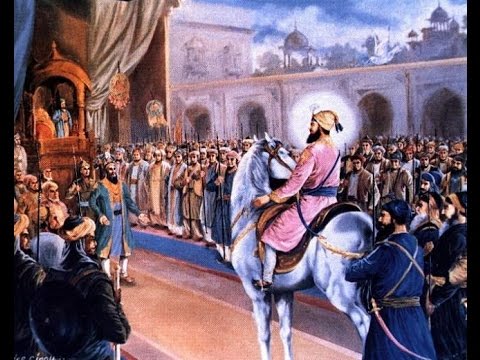
Guru Gobind Singh Ji despatched for the assistance of the oldest inquirer, the liberal Prince Muazzam, a token unforeseen of Sikhs which partook in the skirmish of Jajau, unequivocally won by the Prince who climbed the position of authority with the title of Bahadur Shah.
Ruler Bahadur Shah had as of now to move against the Kachhvaha Rajputs of Amber (Jaipur) and after that to the Deccan where his most youthful sibling, Kam Baksh, had raised the standard of revolt. The Guru went with him and, as history says, he tended to congregations of individuals in transit lecturing the expression of Guru Nanak Ji .
Guru Gobind Singh Ji
The two camps crossed the River Tapti in June 1708 and the Ban-Ganga in August, touching base at Nanded, on the Godavari, towards the finish of August.
Guru Gobind Singh Ji
While Bahadur Shah continued further South, Guru Gobind Singh Ji chose to stay for a little while at Nanded. Here he met a Bairagi , Madho Das, whom he favored into a Sikh with the pledges of the Khalsa, renaming him Gurbakhsh Singh . Master Gobind Singh gave Banda Singh five bolts from his own particular quiver and an escort, including five of his picked Sikhs, and guided him to go to Punjab and carry on the battle against the oppression of the commonplace overlords.
Battle of Bhangani : –
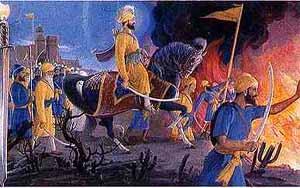
The Guru advised slope Rajas including Raja Bhim Chand for giving their girls to the Moghuls as tribute for holding their positions. His endeavors at winning their help against Aurangzeb bore no natural product.
Despite what might be expected, the slope Rajas planned with the Moghul armed forces to put down the intensity of Guru Gobind singh Ji. They anyway confronted vanquish a few times on account of the similarly little Sikh Army.
| Birth | 1666, Patna |
| Father / Mother | Guru Teg Bahadur Ji / Mata Gujri Ji |
| Spouse | Jito Ji / Bibi Sundri Ji / Sahib Devan |
| Sons | Sahibzada Zorawar Singh , Sahibzada Jujhar Singh , Sahibzada Fateh Singh , Sahibzada Ajit Singh |
| Guru Gaddi | 1675 – 1708 |
| Compositions | Dasam Granth, Var Sri Bhagauti Ji Ki, Bachitra Natak, Akal Ustat, Chandi di var, Jaap Sahib, Chadi Charitra, Gyan Prabhodh, Khalse-di-Mahima, Swayyal, Zafarnama (letter to Aurangzeb), Chopai Sahib |
| City Founded | Paonta Sahib |
| Abolished | Masand System |
| Mughal Emperor at his time | Aurangzeb and Bahadur Shah |
| Converted to Skihism | Madho Das Bairagi |
| His Successor | Guru Granth Sahib Ji |
| Jyoti Jot | 1708 at Nanded, Maharashtra |
Jyoti Jot : –
Before Guru Ji died at Nanded in 1708, he nominated Guru Granth Sahib Ji as the Guru of the Sikhs.